- Home
- Quizzes
- My Quiz Activity
- Newsletters
- Sports Betting
- MY FAVORITES
- Add Sports/Teams
- SPORTS
-
NFL
- NFL Home
- Arizona Cardinals
- Atlanta Falcons
- Baltimore Ravens
- Buffalo Bills
- Carolina Panthers
- Chicago Bears
- Cincinnati Bengals
- Cleveland Browns
- Dallas Cowboys
- Denver Broncos
- Detroit Lions
- Green Bay Packers
- Houston Texans
- Indianapolis Colts
- Jacksonville Jaguars
- Kansas City Chiefs
- Las Vegas Raiders
- Los Angeles Chargers
- Los Angeles Rams
- Miami Dolphins
- Minnesota Vikings
- New England Patriots
- New Orleans Saints
- New York Jets
- New York Giants
- Philadelphia Eagles
- Pittsburgh Steelers
- San Francisco 49ers
- Seattle Seahawks
- Tampa Bay Buccaneers
- Tennessee Titans
- Washington Commanders
-
MLB
- MLB Home
- Arizona Diamondbacks
- Atlanta Braves
- Baltimore Orioles
- Boston Red Sox
- Chicago White Sox
- Chicago Cubs
- Cincinnati Reds
- Cleveland Guardians
- Colorado Rockies
- Detroit Tigers
- Houston Astros
- Kansas City Royals
- Los Angeles Angels
- Los Angeles Dodgers
- Miami Marlins
- Milwaukee Brewers
- Minnesota Twins
- New York Yankees
- New York Mets
- Oakland Athletics
- Philadelphia Phillies
- Pittsburgh Pirates
- San Diego Padres
- San Francisco Giants
- Seattle Mariners
- St. Louis Cardinals
- Tampa Bay Rays
- Texas Rangers
- Toronto Blue Jays
- Washington Nationals
-
NBA
- NBA Home
- Atlanta Hawks
- Boston Celtics
- Brooklyn Nets
- Charlotte Hornets
- Chicago Bulls
- Cleveland Cavaliers
- Dallas Mavericks
- Denver Nuggets
- Detroit Pistons
- Golden State Warriors
- Houston Rockets
- Indiana Pacers
- Los Angeles Clippers
- Los Angeles Lakers
- Memphis Grizzlies
- Miami Heat
- Milwaukee Bucks
- Minnesota Timberwolves
- New Orleans Pelicans
- New York Knicks
- Oklahoma City Thunder
- Orlando Magic
- Philadelphia 76ers
- Phoenix Suns
- Portland Trail Blazers
- Sacramento Kings
- San Antonio Spurs
- Toronto Raptors
- Utah Jazz
- Washington Wizards
-
NHL
- NHL Home
- Anaheim Ducks
- Arizona Coyotes
- Boston Bruins
- Buffalo Sabres
- Calgary Flames
- Carolina Hurricanes
- Chicago Blackhawks
- Colorado Avalanche
- Columbus Blue Jackets
- Dallas Stars
- Detroit Red Wings
- Edmonton Oilers
- Florida Panthers
- Los Angeles Kings
- Minnesota Wild
- Montreal Canadiens
- Nashville Predators
- New Jersey Devils
- New York Islanders
- New York Rangers
- Ottawa Senators
- Philadelphia Flyers
- Pittsburgh Penguins
- San Jose Sharks
- Seattle Kraken
- St. Louis Blues
- Tampa Bay Lightning
- Toronto Maple Leafs
- Vancouver Canucks
- Vegas Golden Knights
- Washington Capitals
- Winnipeg Jets
- NCAAF
- NCAAM
- Boxing
- Entertainment
- Lifestyle
- Golf
- MMA
- Soccer
- Tennis
- Wrestling
- More Sports
- RESOURCES
- My Account
- YB on Facebook
- YB on Twitter
- YB on Flipboard
- Contact Us
- Privacy Policy
- Terms of Service
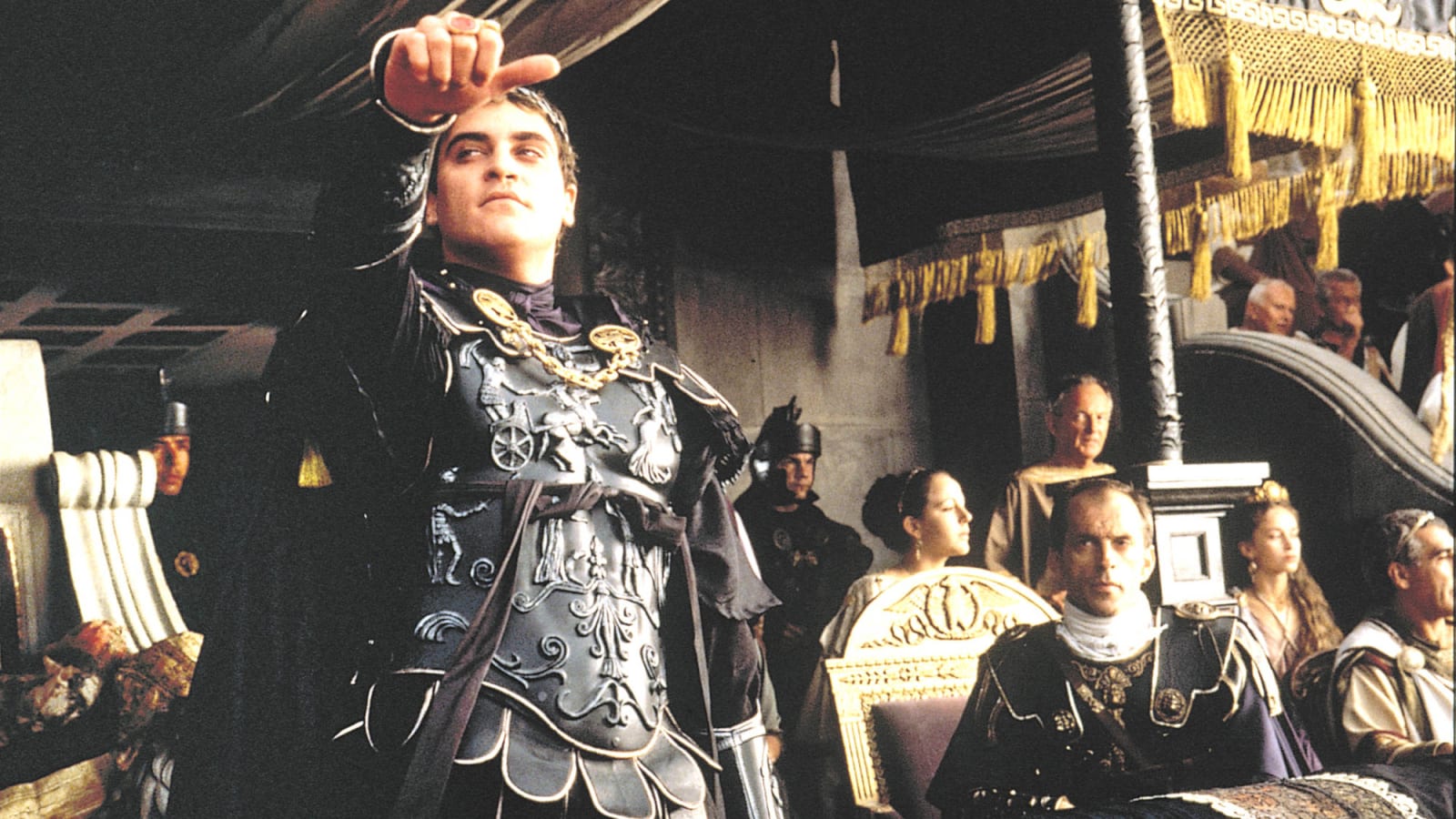
20 facts you might not know about 'Gladiator'
Historical epics used to be one of the top genres in Hollywood. It seems like every year there was a “Ben Hur” or a “Cleopatra” or a “The 10 Commandments.” Then, that genre went by the wayside. It didn’t go away completely, though, thanks to films like “Gladiator.” In fact, “Gladiator” also showed that there was still some hunger for movies of this ilk, though it was also perhaps an anomaly, give or take a “300,” which is less a historical epic and more a Zack Snyder paean to gore and abs. Let’s flashback to the turn of the millennium for a more set over a millennium into the past with 20 facts about “Gladiator.”
20 facts you might not know about 'Gladiator'

Historical epics used to be one of the top genres in Hollywood. It seems like there was a Ben Hur, Cleopatra, or The 10 Commandments every year. Then, that genre went by the wayside. It didn’t go away completely, though, thanks to films like Gladiator.
Gladiator also showed there was still some hunger for movies of this ilk. It was perhaps an anomaly, give or take a 300, which is less a historical epic and more a Zack Snyder paean to gore and abs. Let’s flashback to the turn of the millennium for a more set over a millennium into the past with 20 facts about Gladiator.
The screenplay was inspired by a book that had been kicking around for a while

“Gladiator” is an original story, first pitched by David Franzoni after his success with “Amistad.” However, as he was not an expert on Ancient Rome, he did turn to sources for inspiration. One of those was the 1958 novel “The Way of the Gladiator” by Daniel P. Mannix. However, that book got retitled after its release and is now known as “Those About to Die.”
Maximus wasn’t known as Maximus originally

Some of the characters in “Gladiator” are real people from history, such as Commodus and Marcus Aurelius. Maximus, the main character, is not one of those. Originally, though, the character was called Narcissus in the script. There was an actual Narcissus, and in real life, he purportedly killed the real Commodus. Eventually, Franzoni decided to create a new main character.
Mel Gibson turned down the lead role

Russell Crowe ended up playing Maximus, but he was not the first choice. Originally, Mel Gibson was offered the chance to star in the movie. Gibson felt he was too old for the part, though, so he decided to decline the opportunity.
One of the actors was a pretty strong guy
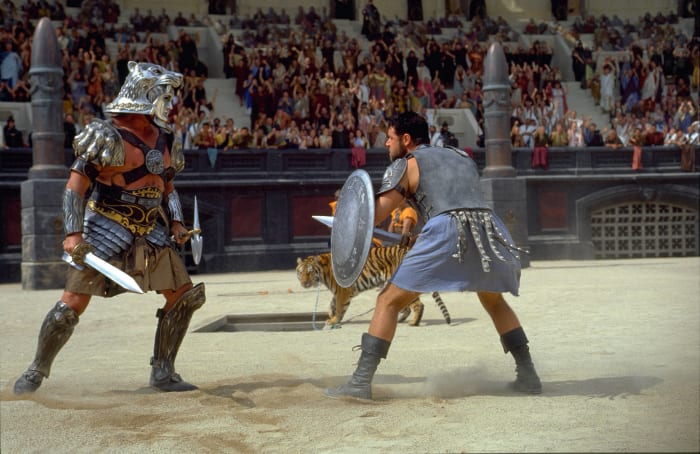
Tigris of Gaul, a retired gladiator called back into action by Commodus to kill Maximus, is an opposing figure. That’s not surprising. He’s played by Sven-Ole Thorsen. The Danish actor has done a lot of stunt work and also shows up in a few Arnold Schwarzenegger films. Standing 6’4’’, Thorsen first rose to prominence by winning Denmark’s Strongest Man competition in 1983, one year after finishing 10th in Europe’s Strongest Man.
Oliver Reed died during the production

Reed had a reputation as a talented actor but a tempestuous, hard-living guy. His drinking exploits are well chronicled, but it took a toll on his body. In “Gladiator,” Reed plays Antonius Proximo, but he did not live to finish out the shooting. While filming the movie, Reed died of a heart attack at 61.
A digital Reed finished his performance

Reed’s Proximo was supposed to live until the end of the movie. That decision was changed after his death, but they still needed more of the grizzled gladiator trainer in the film. This led to a computer-generated double being created of Reed, which shows up in a few moments in the movie.
A smaller version of the Colosseum was built for the film

Most of the scenes of Ancient Rome were filmed over nineteen weeks on the island of Malta. This included building a replica of the iconic Colosseum to one-third scale. Now, that may not sound all that big, but that means it was 52-feet tall, took seven months to build, and cost $1 million.
“Gladiator” mixes accuracy and fictionalization

Director Ridley Scott says that he wanted to make the most accurate movie about Ancient Rome ever. That included having several experts on the era on the crew for the film. Still, the movie takes some liberties. For example, Marcus Aurelius was not murdered by Commodus but died from an epidemic. Also, Commodus was not killed in gladiatorial battle either.
One historical fact was removed because it seemed to fake

In an early version of the script, gladiators endorsed products in the arena. Sounds absurd, right? Actually, it’s based in reality. Funnily enough, this was removed from the script because the filmmakers feared there was no way people would believe it was accurate and would assume it was very anachronistic.
Luciano Pavarotti was almost on the soundtrack

Even if you don’t know much about opera, you probably know the name, Luciano Pavarotti. The Italian tenor is a legend of the genre. He was apparently offered a chance to sing a song for the soundtrack but, like Gibson, declined to be involved. Pavarotti would come to regret it, though. In 2003 he actually released a version of the song from the film that he sang.
The movie received a ton of Oscar nominations

“Gladiator” actually got some middling reviews – Roger Ebert gave it two stars – but the Oscars absolutely loved it. The movie got 12 nominations, a meaty number to say the least. It would end up winning five of them, including Best Actor for Crowe and Best Picture.
“Gladiator” pulled off a rare feat
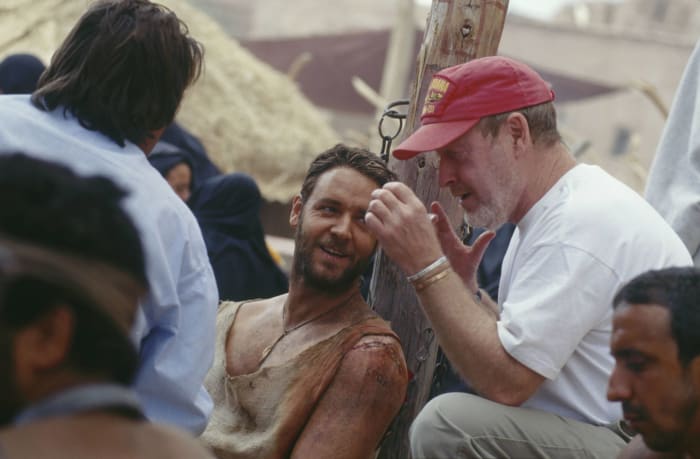
We just mentioned that the movie won Best Picture, but it was unable to win Best Director or Best Original Screenplay in spite of nominations in both. This was something that had not been seen in a while. Prior to “Gladiator” the last time a movie won Best Picture without a win for directing or screenplay was in 1949 when “All the King’s Men” won.
Crowe was in the middle of quite the run
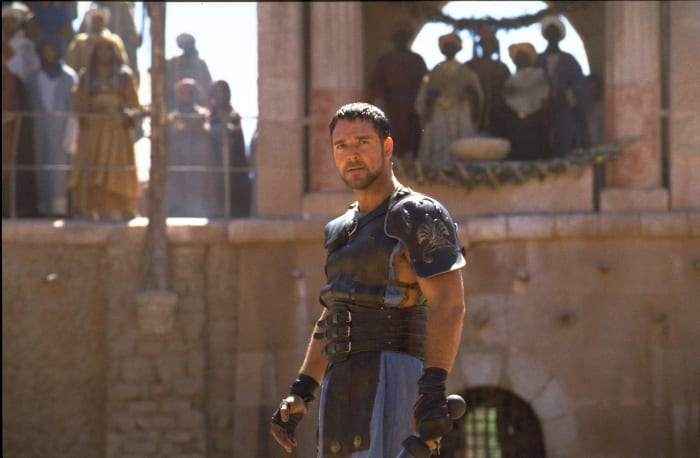
At the turn of the millennium, few actors were as hot as Crowe. His win for Best Actor for “Gladiator” was sandwiched in between two more nominations for the same category. In 1999 he was up for “The Insider” and in 2001 he was nominated for “A Beautiful Mind,” a movie that won Best Picture as well.
“Gladiator” inspired an increase in interest in Ancient Rome

The popularity of the movie got people actually interested in history. Books about Ancient Roman figures such as Cicero and Marcus Aurelius saw their sales soar. In fact, it was so pervasive that the “New York Times” dubbed it the “’Gladiator’ effect.”
There has been talks of a sequel for decades

Given the popularity of “Gladiator,” it’s not surprising there would be ideas bandied about for a follow-up film. Indeed, the development began in 2001. Of course, many years later it has not happened yet. There have been talks in recent years of it finally happening, but nothing is set in stone yet. Apparently, Chris Hemsworth has expressed interest in being involved.
The wolf isn’t a real wolf
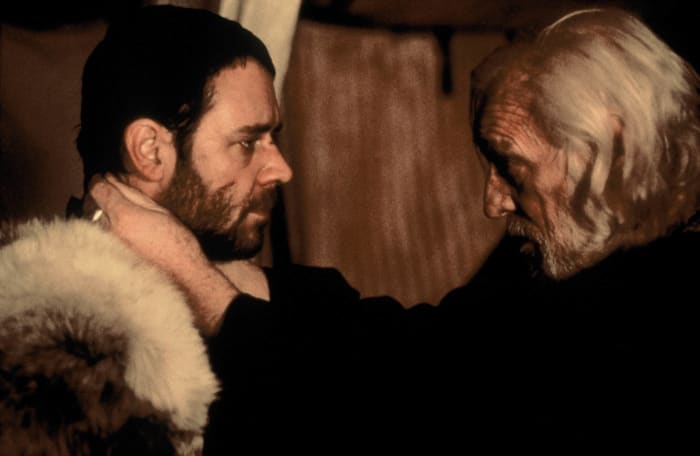
Maximus has a pet wolf in the movie, but the production could not use an actual wolf due to England’s laws against importing wolves. Instead, a Tervuren Belgian Shepherd dog stepped into the role.
The movie was shot chronologically
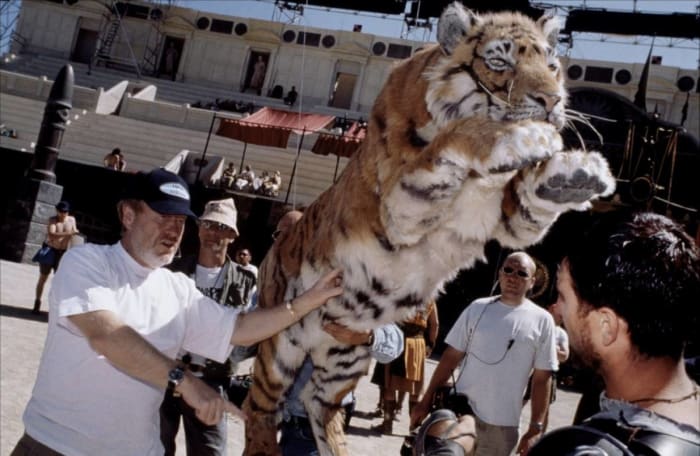
Films are often shot out of order for one reason or another. “Gladiator” was a different experience, though. Scott shot the movie largely chronologically. Given that they had to hop from location to location to follow the narrative of the film that makes some sense.
Derek Jacobi knew a thing or two about Ancient Rome

Sir Derek Jacobi played Gracchus, a member of the Roman Senate who opposes Commodus. It’s not the first time the British actor showed up in Ancient Rome. He played Claudius in the famed British miniseries “I, Claudius” in the ‘70s.
Joaquin Phoenix eschewed real leather
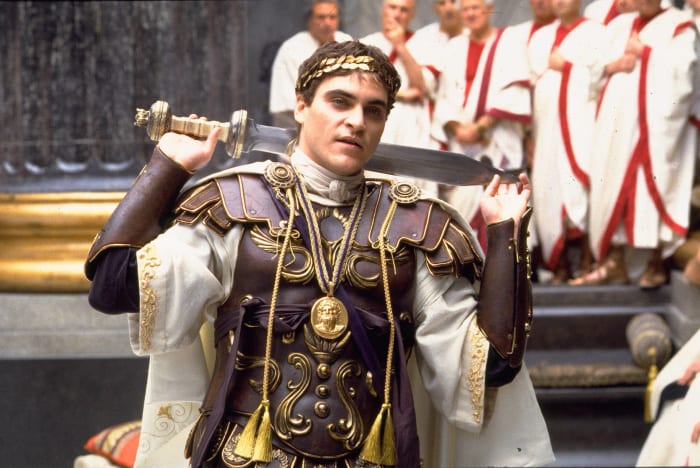
If you remember Phoenix’s peculiar Oscar acceptance speech, you know the guy is a hardcore vegan. That came into play when filming “Gladiator.” Leather was a staple of garb back in Ancient Rome, but Phoenix would never wear such a thing. Instead, all of his leather is synthetic and not an animal byproduct at all.
The script wasn’t finished when the movie began
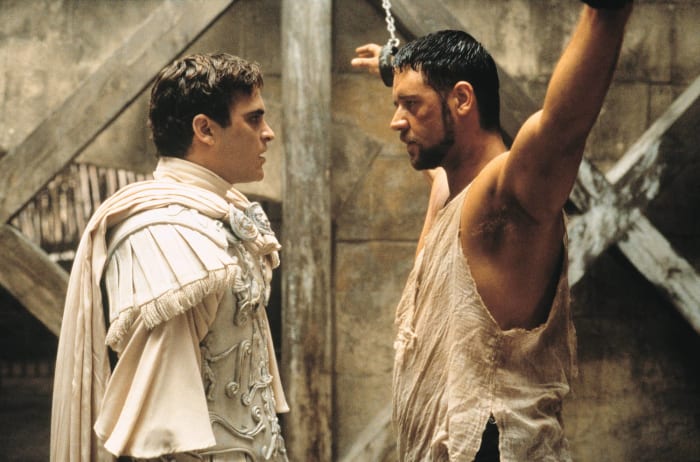
“Gladiator” won Best Picture. It got a Best Original Screenplay nomination. It made its budget back at the box office in two weeks and finished as the second-highest-grossing movie of 2000. As such, you might be surprised that the production wasn’t that smooth. When they were filming the movie the script wasn’t finished, and a third screenwriter, William Nicholson, was brought on to give the screenplay another past. Reportedly Crowe was frequently and vocally frustrated with the script. Somehow, it ended with him winning an Academy Award. It’s weird how showbiz goes sometimes.
Chris Morgan is a sports and pop culture writer and the author of the books The Comic Galaxy of Mystery Science Theater 3000 and The Ash Heap of History. You can follow him on Twitter @ChrisXMorgan.
More must-reads:
- 23 films that were overlooked because of Barbenheimer
- Popular books that were made into terrible movies
Trending in Entertainment
Customize Your Newsletter
 +
+
Get the latest news and rumors, customized to your favorite sports and teams. Emailed daily. Always free!
Use of this website (including any and all parts and
components) constitutes your acceptance of these
Terms of Service and Privacy Policy.

